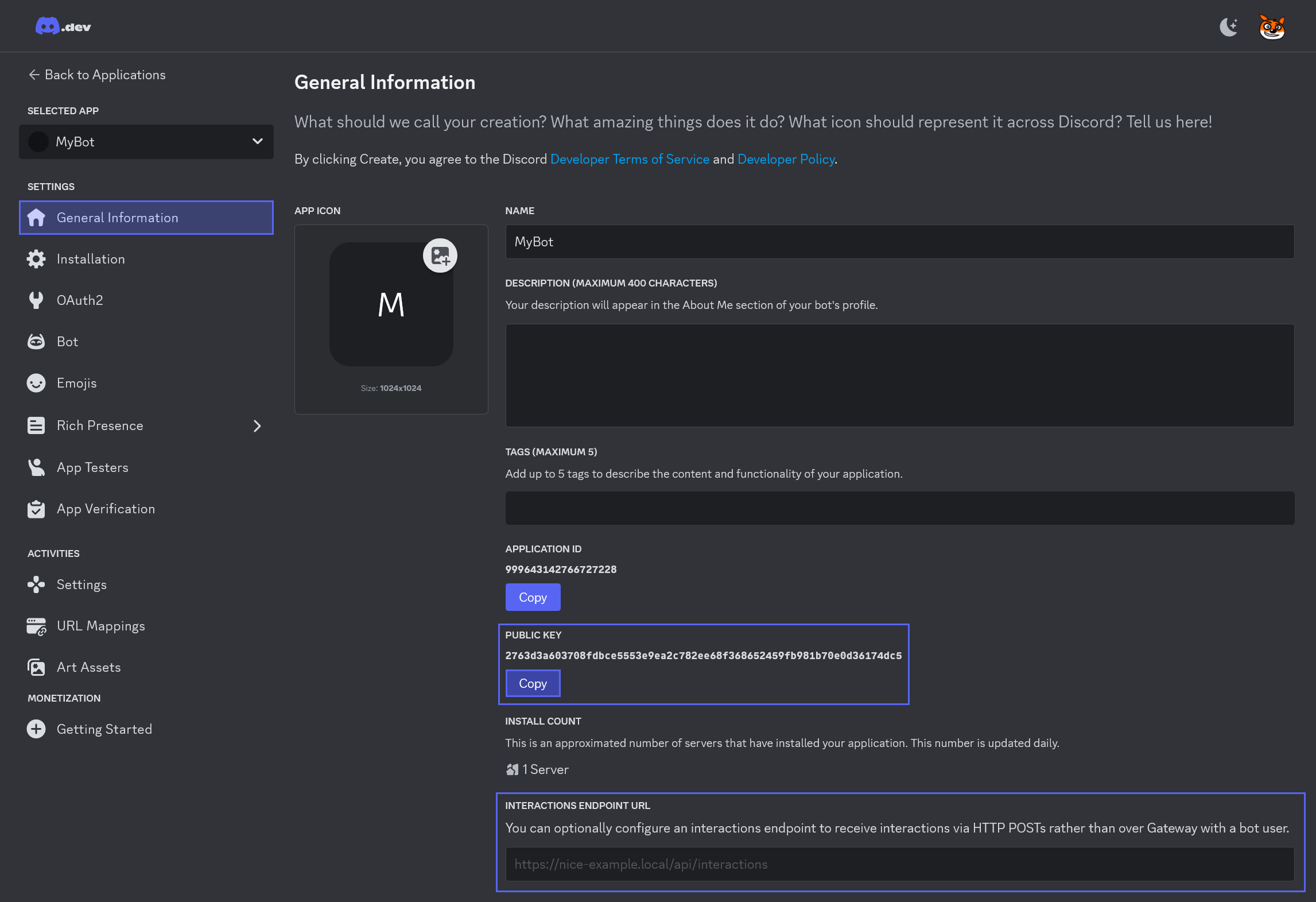Handling HTTP Interactions with ASP.NET Core
This guide will show you how to receive and handle Discord interactions, like slash commands and button clicks, through HTTP requests using the NetCord.Hosting.AspNetCore package. This ASP.NET Core package can be effortlessly integrated with NetCord.Hosting.Services to handle these HTTP interactions in C# easily. Additionally, you can implement your own IHttpInteractionHandler to manually handle HTTP interactions received from Discord, giving you full control over your bot's behavior.
Required Dependencies
Before you get started, ensure that you've installed the necessary native dependencies. Follow the installation guide to set them up.
Setting Up HTTP Interactions in C#
To handle HTTP interactions from Discord in your bot, you need to use AddDiscordRest to add the RestClient and then call UseHttpInteractions to map the HTTP interactions route. You can also use AddHttpApplicationCommands to add the application command service with preconfigured HTTP contexts to your host builder.
using NetCord.Hosting.AspNetCore;
using NetCord.Hosting.Rest;
using NetCord.Hosting.Services.ApplicationCommands;
var builder = WebApplication.CreateBuilder(args);
builder.Services
.AddDiscordRest()
.AddHttpApplicationCommands();
var app = builder.Build();
app.AddSlashCommand("ping", "Ping!", () => "Pong!");
// You can specify any pattern here, but remember to update it in the Discord Developer Portal
app.UseHttpInteractions("/interactions");
await app.RunAsync();
Receiving HTTP Interactions via HTTP Interaction Handler
You can also create your own IHttpInteractionHandler to handle HTTP interactions manually. This allows you to have full control over the behavior of your bot when receiving HTTP interactions. You register them using AddHttpInteractionHandler.
public class HttpInteractionHandler(ILogger<HttpInteractionHandler> logger) : IHttpInteractionHandler
{
public ValueTask HandleAsync(Interaction interaction)
{
logger.LogInformation("Received interaction: {}", interaction);
return default;
}
}
Configuring Your Discord Bot for HTTP Interactions
To make your bot receive HTTP interactions from Discord, you need to store the public key in the configuration and specify the endpoint URL in the Discord Developer Portal.

Specifying the Public Key in the Configuration
You can for example use appsettings.json file for configuration. It should look like this:
{
"Discord": {
"Token": "Token from Discord Developer Portal",
"PublicKey": "Public Key from Discord Developer Portal"
}
}
Specifying the Interactions Endpoint URL
If your bot is hosted at https://example.com and you have specified /interactions pattern in UseHttpInteractions, the endpoint URL will be https://example.com/interactions. Also note that Discord sends validation requests to the endpoint URL, so your bot must be running while updating it.
For local testing, you can use ngrok, a tool that exposes your local server to the internet, providing a public URL to receive interactions. Use the following command to start ngrok with a correct port specified:
ngrok http http://localhost:port
It will generate a URL that you can use to receive HTTP interactions from Discord. For example, if the URL is https://random-subdomain.ngrok-free.app and you have specified /interactions pattern in UseHttpInteractions, the endpoint URL will be https://random-subdomain.ngrok-free.app/interactions.
Extending Your HTTP Interactions Bot
Now, as you have your bot up and running, you can start adding more features to it. You can use the following guides to learn more about the features you can add to your HTTP interactions based bot:
- Application Commands: Learn how to make complex commands with parameters and subcommands with ease.
- Component Interactions: Make your HTTP interactions bot interactive with buttons, select menus, and other components easily.